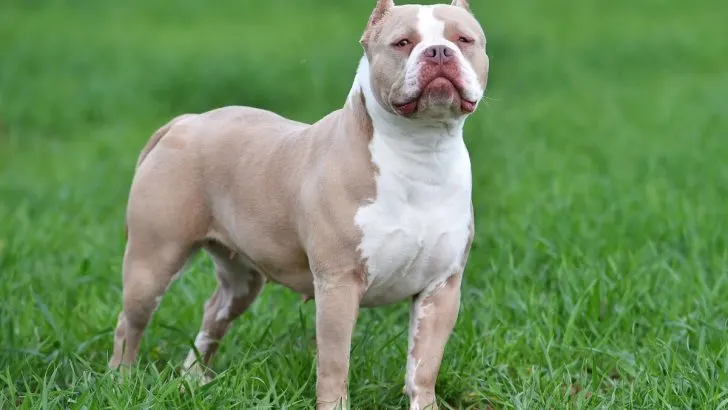So, you’ve decided to share your life with an American Bully. Congratulations! You’ve just signed up for a rollercoaster of slobbery kisses, enthusiastic tail wags, and a lot of muscle.
If you are wondering how to train an American bully, we have you covered!
Training an American Bully is like trying to teach a bodybuilder ballet – it’s challenging, often hilarious, and incredibly rewarding.
Buckle up because we’re about to dive into the entertaining, sometimes chaotic, but always heartwarming journey of transforming your lovable beast into a well-mannered companion and a good dog.
Understanding Your American Bully
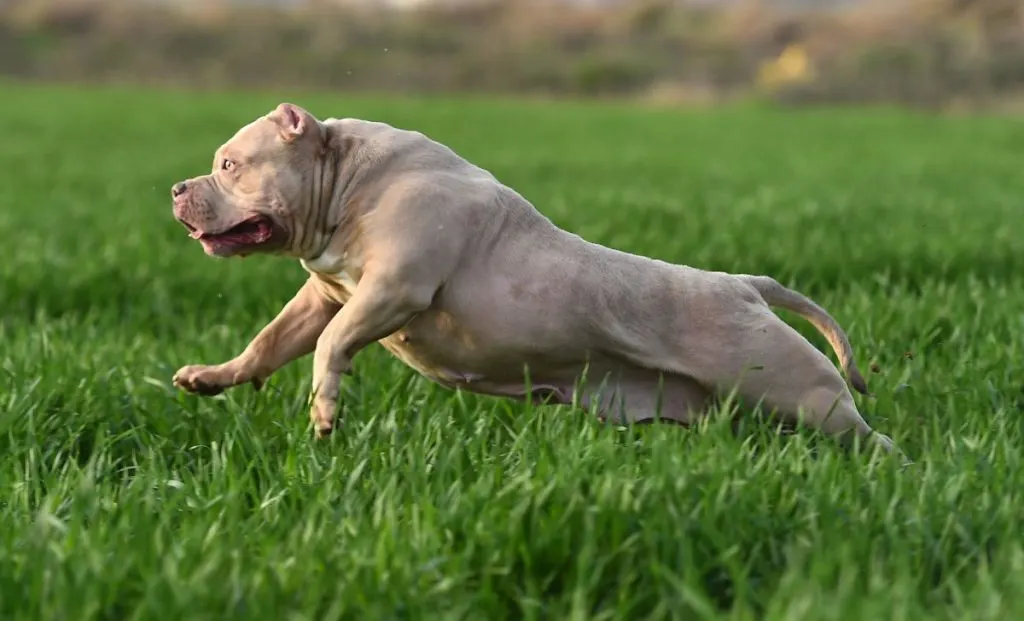
Let’s talk about your new roommate – the American Bully dog. This friendly dog is like the neighborhood extrovert who greets everyone with a smile and a wagging tail.
They’re also an energetic dog, so if you thought you could just lounge on the couch all day, think again! These furballs are like furry little tornadoes, always on the move and ready for action.
Early training is crucial because an American Bully puppy is like a sponge—it soaks up everything, from your commands to that pair of socks you left lying around.
Sometimes, these pups can have breathing issues, here you can explore the 11 most common causes.
Embrace the chaos, laugh through the mess, and get ready for a lot of fun as you guide your playful pup into becoming the best dog on the block.
Establishing Good Behavior From The Start
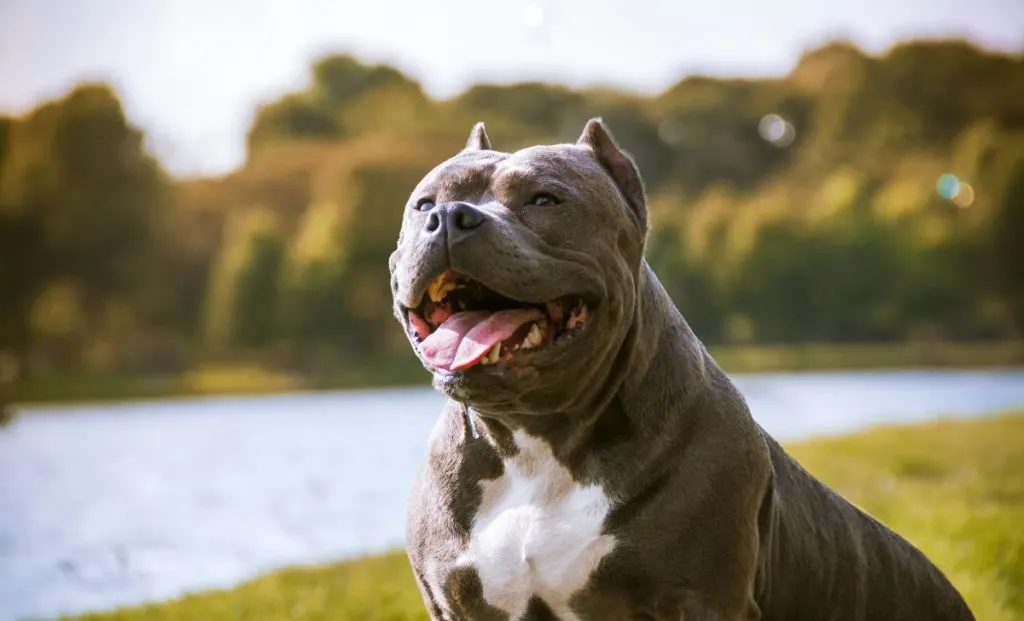
Getting your American Bully puppy on the right track from day one is crucial to keeping your home from becoming a wild zoo.
Starting early helps squash bad habits before they become big problems and sets the stage for a lifetime of good behavior.
Plus, let’s be honest – it’s easier to train an adorable, tiny furball than a stubborn, muscle-bound powerhouse they become later!
Early Training
Small pups are much more adaptable and can learn good habits more quickly. Begin with the basic commands, such as “sit,” “stay,” and “come.”
These foundational commands help establish you as the leader and make daily interactions much smoother.
Use positive reinforcement techniques, such as food treats or verbal praise, to reward good behavior. This approach encourages your puppy to repeat the desired actions and builds a positive association with training sessions.
Consistent commands and clear communication are essential in helping your puppy understand what is expected.
Repetition and consistency help solidify the connection between the command and the action, making it easier for your puppy to follow through.
For instance, always use the same word and hand signal for each command to avoid confusing your pup.
Exposure To Different People And Environments
Exposing your American Bully to different environments and people is essential for socialization.
This helps prevent aggressive behavior and ensures your dog is comfortable in various settings. If you would like to know the nine most common reasons why American Bullies are aggressive, we’ve got you covered.
Take your dog on brisk walks in different neighborhoods, visit parks, and allow it to interact with other dogs and people.
This exposure helps develop a well-rounded and confident dog. According to the American Society for the Prevention of Cruelty to Animals (ASPCA), well-socialized dogs are generally happier, friendlier, and less stressed in new situations.
Controlled Manner

Training your dog in a controlled manner is crucial, especially when introducing new environments.
Use a leash and keep your dog close to ensure they do not become overwhelmed or exhibit unwanted behaviors.
Gradually increase difficulty and distractions as your dog becomes more comfortable and confident.
The AKC advises that controlled exposure to new experiences should be gradual and positive to build your dog’s confidence without causing fear or anxiety.
Building A Strong Bond
Developing a strong bond with your American Bully is fundamental to successful training.
It’s not just about teaching commands; it’s about making a relationship founded on trust, respect, and a lot of fun.
Spend quality time with your pup, engaging in activities you enjoy. These moments are crucial, whether playing fetch, going for a jog, or just cuddling on the couch.
Playtime is not just for fun; it also helps to build trust and a deep connection. When you throw that ball or tug on that rope, you entertain your pup and communicate love and attention.
Incorporating interactive toys during playtime can stimulate your dog’s mind and strengthen your relationship. Toys that challenge your dog’s problem-solving skills, like puzzle feeders or treat-dispensing toys, are fantastic.
They keep your American Bully engaged and mentally sharp, which is essential for their well-being. Plus, working through these challenges together can be a great bonding experience.
According to PetMD, engaging in regular, enjoyable activities with your dog can significantly enhance your bond and improve training outcomes.
Try to turn everyday moments into training opportunities. Teaching your dog to sit before you throw their favorite toy or having them stay while you hide treats around the house can make learning feel like a game.
This approach not only makes training more effective but also more enjoyable for both of you.
So, dive into the fun and watch how your relationship blossoms.
The stronger your bond, the more responsive and happy your American Bully will be, making training a breeze.
Effective Training Techniques
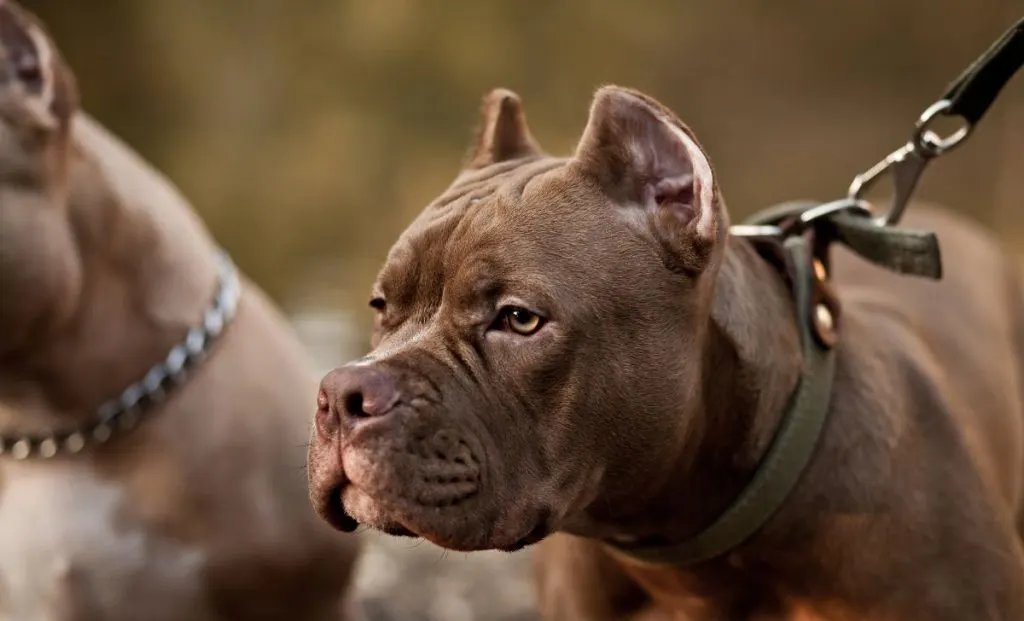
Training your dog is not and should not be a tough chore—it is and can be a fun and rewarding experience for both of you!
Think of it as quality time to teach your furry friend some cool tricks and good manners. Whether you’re bribing them with treats, using a clicker, or giving lots of belly rubs, plenty of effective methods help your dog become the best-behaved pup ever.
Let’s dive into the dog training world and discover how to make it an enjoyable journey for you and your canine companion.
Clicker Training
Clicker training is an effective method for American Bullies and every other breed out there.
This widespread technique uses a clicker to mark the wanted behavior, followed by a reward.
The clicker provides a consistent sound that helps your pup understand which behavior is being rewarded.
Over time, your canine will associate the clicker sound with positive outcomes, making training more efficient.
The Humane Society of the United States highlights the importance of timing in clicker training; the click should occur precisely when the desired behavior is performed, followed by an immediate reward.
Positive Reinforcement Techniques
Positive reinforcement is a powerful tool in dog training. Rewarding your American Bully with treats, verbal praise, or playtime reinforces good behavior.
This method encourages your pup to repeat the desired actions. Remember, the timing of the reward is critical.
Provide the reward immediately after the good behavior to ensure your dog makes the connection.
The American Kennel Club (AKC) emphasizes that positive reinforcement builds a trusting relationship between you and your dog, making them more willing to learn and obey.
Is The Choke Collar The Right Collar
While some trainers may use choke collars, they must be used correctly to avoid harm.
However, many experts recommend using a suitable collar, such as a flat buckle collar, which is safer and more comfortable for your dog.
The collar should fit snugly but not tight, allowing for adequate control during training sessions.
According to the American Veterinary Society of Animal Behavior, aversive tools like choke collars can cause physical harm and behavioral issues, so a positive, gentle approach is always preferable.
Addressing Specific Behaviors
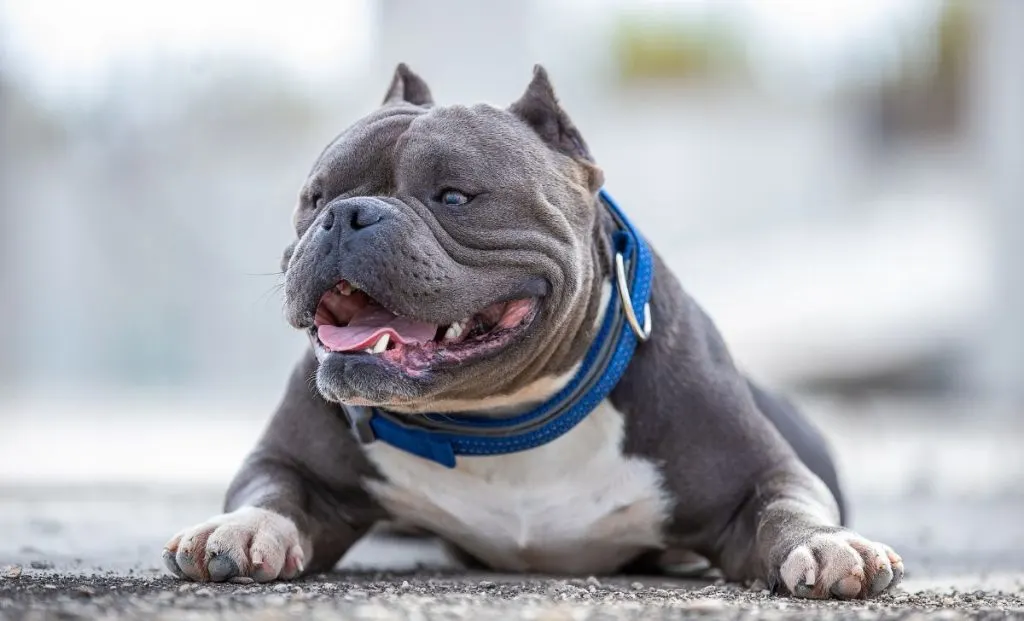
Every dog has their quirks, and your American Bully is no exception!
Specific behaviors can sometimes be challenging, from barking at the mailman to getting too excited around new friends.
But don’t worry – addressing these behaviors doesn’t have to be stressful. It can be an opportunity to understand your dog better and strengthen your bond.
Let’s tackle these issues with humor, patience, and clever tricks up our sleeve!
Having A Good Stay Command
Teaching your American Bully the “stay” command is vital for their safety and your peace of mind.
Start by having your dog sit. Once they sit, hold your hand out, palm facing them, and say, “Stay.”
Gradually increase the distance and duration, rewarding your dog for successfully staying in place.
According to the AKC, consistency is critical when teaching the “stay” command; practice regularly in different settings to reinforce the behavior.
Managing Aggressive Behavior
If your American Bully exhibits aggressive behavior, it’s essential to address it immediately.
The first step is understanding the root cause of the aggression, whether it’s fear, dominance, or frustration.
Consult with dog training experts if needed. They can provide tailored advice and techniques to manage and correct aggressive behavior.
The ASPCA recommends working with a certified professional dog trainer or a veterinary behaviorist to ensure safe and effective behavior modification for dogs showing signs of aggression.
Maintaining Good Habits

So, you’ve put in the hard work to train your American Bully, and now they’re behaving like a model citizen. Great job!
But just like humans, dogs can sometimes forget their manners. Maintaining good habits is all about keeping those positive behaviors fresh and consistent.
You can ensure your pup stays on its best behavior with a little effort and a lot of love. Now, let us explore some easy and fun ways to keep those good habits strong!
Obedience Exercises And Classes
Regular obedience exercises help reinforce good behavior.
Consider enrolling your American Bully in obedience classes where they can learn new commands and practice socialization under professional supervision.
These classes provide structured training and can benefit first-time dog owners.
According to the AKC, group classes offer socialization opportunities and help dogs learn to follow commands amidst distractions.
Consistent Commands And Clear Communication
Consistency is vital to maintaining good habits.
Use the same commands and ensure everyone in the household follows the same training approach.
Clear communication helps your dog understand what is expected, reducing confusion and enhancing training effectiveness.
The AKC advises that all family members should agree on training rules and commands to avoid sending mixed signals to the dog.
Patience And Persistence
Training an American Bully requires patience and persistence.
Some behaviors may take time to develop, and setbacks are normal. Stay calm and consistent, and celebrate small victories along the way.
Your perseverance will pay off as your dog becomes a well-behaved family member.
PetMD highlights the importance of patience, especially when dealing with stubborn breeds, as pushing too hard can lead to frustration for you and your dog.
Tips For Specific Scenarios
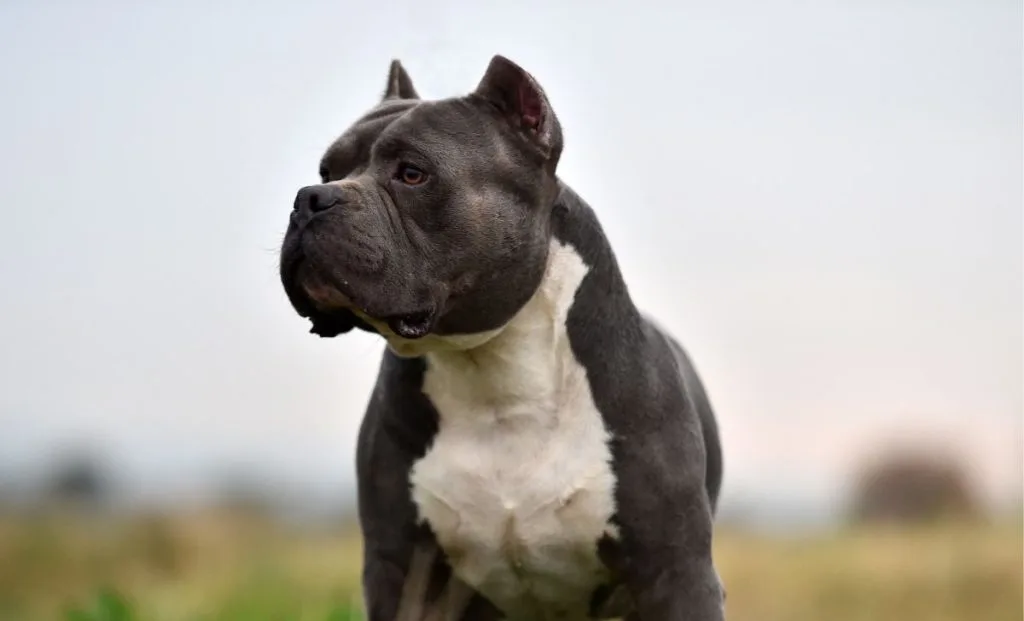
Training different dogs requires tailored approaches to suit their unique needs and capabilities.
Each type of dog presents its own challenges and rewards, making personalized strategies essential for effective training
Training Senior Dogs
Training senior dogs can be challenging, but it’s not impossible.
Adjust the training intensity and duration to match their energy levels and physical capabilities.
Use gentle commands and positive reinforcement to encourage participation. Senior dogs may take longer to learn new behaviors, so extra patience is required.
According to the American Veterinary Medical Association (AVMA), older canines can still learn new tricks (unlike the famous saying), and training can keep their minds sharp and bodies active.
Training Energetic Dogs
Energetic dogs like the American Bully benefit from incorporating physical activities into their training routine.
Brisk walks, playtime, and interactive toys help burn off all the excess energy, making the pups more receptive to training.
Incorporate obedience exercises during these activities to keep your dog engaged and focused.
The AKC suggests energetic dogs require more frequent and varied activities to prevent boredom and destructive behavior.
Quick Training Tips
- Use Specific Hand Signals: Incorporate hand signals and verbal commands to reinforce learning. The AKC recommends using clear, distinct hand signals to aid in communication.
- Employ Precise Timing: Reward good behavior immediately to strengthen the association. According to the AKC, timely rewards are essential for practical training.
- Implement Close Supervision: Monitor your dog closely during training to prevent and correct unwanted behavior. PetMD advises keeping a watchful eye on your dog to catch and promptly redirect inappropriate actions.
- Provide Adequate Play Time: Ensure your dog gets enough playtime to keep them happy and healthy. The ASPCA highlights the importance of regular playtime for physical and mental well-being.
- Utilize Interactive Toys: Interactive toys can stimulate your dog mentally and reduce boredom. The AKC suggests challenging your dog’s mind and preventing destructive behavior.
Building A Lifelong Relationship
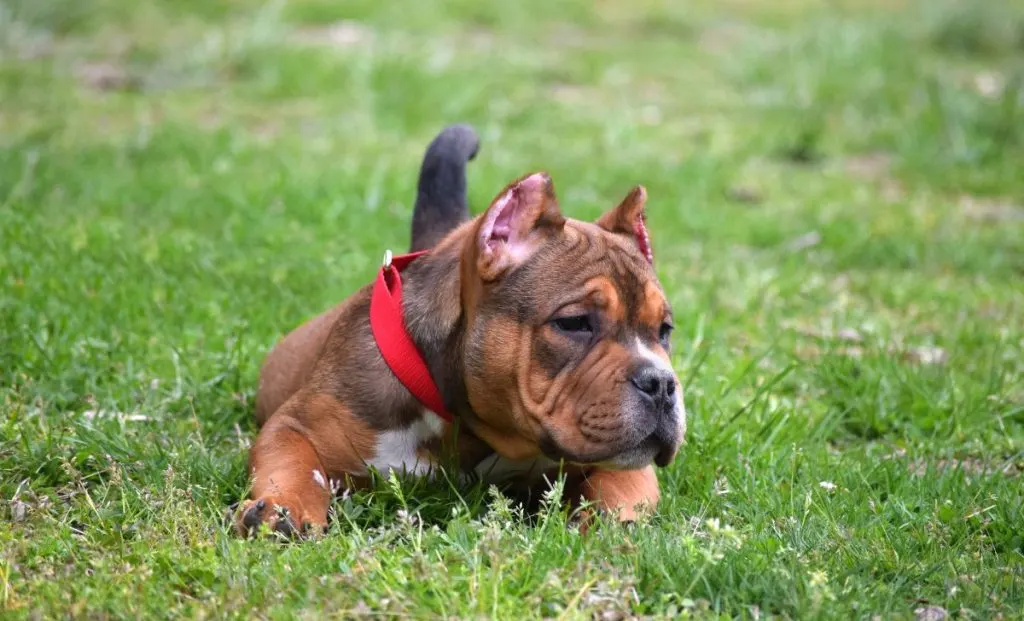
Training is not just about teaching commands; it’s about building a lifelong relationship with your American Bully.
Just imagine how fun it would be for you and your American Bully to navigate the ups and downs of life together, like a dynamic duo in a heartwarming buddy comedy.
Through consistent training, clear communication, and understanding your dog’s needs, you can develop a strong bond based on trust and respect.
Consistency is the secret sauce. Imagine trying to learn a new language, but your teacher keeps changing the rules – frustrating, right?
Dogs feel the same way. Stick to the same commands and rewards, and watch your pup thrive.
Clear communication means no mixed signals – if you want your Bully to sit, make sure everyone in the family uses the same word and gesture.
Understanding your dog’s needs is like being a good friend. Some days, your Bully might need a long walk to burn off energy, while other days, a cozy cuddle might be all they want.
Pay attention to these cues and adjust accordingly. It’s like having a friend who sometimes wants to go out dancing and other times just wants to binge-watch movies – you roll with it!
Have fun with your dog, and if you are just exploring before buying a Bully pup, I suggest you check out the male vs. female American Bully comparison to understand which is a better fit for you!
References
For more detailed information and expert advice on training American Bullies, consider consulting the following resources:
1. [American Kennel Club (AKC)](https://www.akc.org/): Offers a wealth of information on dog breeds, training tips, and behavior management.
2. [American Society for the Prevention of Cruelty to Animals (ASPCA)](https://www.aspca.org/): Provides valuable resources on pet care, behavior, and training.
3. [PetMD](https://www.petmd.com/): Offers articles and advice on various aspects of dog care and training.
4. [Humane Society of the United States](https://www.humanesociety.org/): Provides insights into dog behavior and training techniques.
5. [American Veterinary Medical Association (AVMA)](https://www.avma.org/): Offers information on veterinary care and senior dog training.
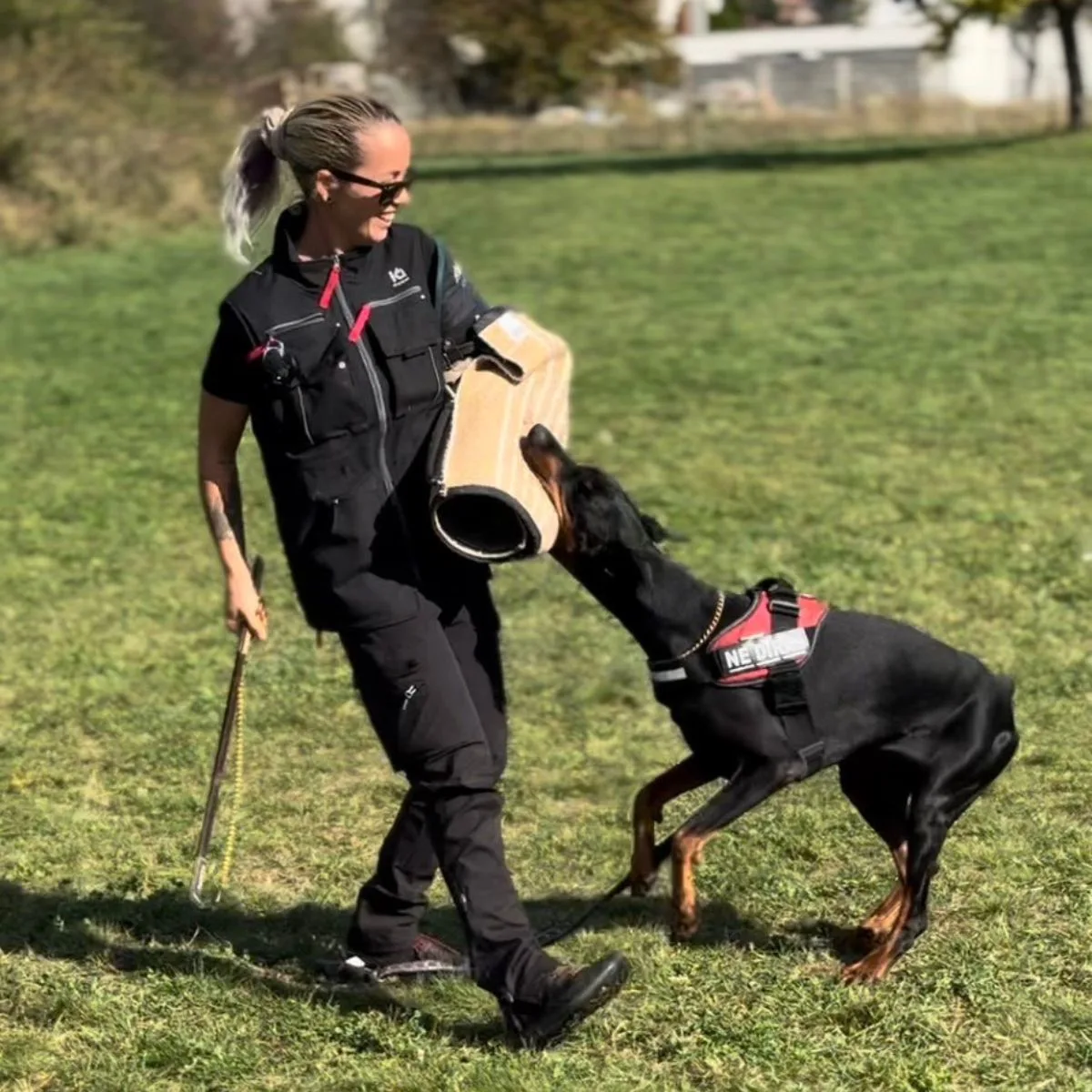
Nandina has been a lifelong dog owner and enthusiast. She shared her home with multiple breeds, including Giant Schnauzers, Cane Corsos, and Huskies. Currently, she is raising a three-year-old rescue and a working-line German Shepherd puppy.
Actively engaged in IGP dog sports for two years, Nandina is a certified instructor for basic obedience and socialization. She works as a trainer in her local dog sports club, and in her spare time, she handicrafts biothane gear for dogs.
